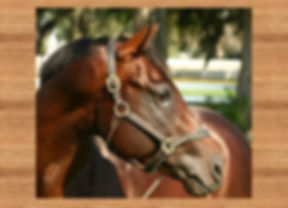
In 2000 Dr. Ellison investigated various genotypes of Sarcocystis neurona and Sarcocystis falcatula that were used by investigators T. Culter and R. MacKay (1999) in their attempts to induce EPM in horses at the University of Florida.
After many attempts, conclusions by the UF team disproved their hypothesis that S. neurona and S. falcatula were one in the same. The result of my work was a bank of DNA from the oocysts that were obtained from opossums and raccoons that were used in the challenge studies.
After reading a paper by Dr. Mike Grigg (National Institutes of Health) published in 2010, Pathogenes gave him a call to discuss some assertions made in the paper. The most intriguing find was a novel, undescribed surface antigen they called SnSAG6 in marine animals. Their SnSAG6 samples came from sea otters, all of which died with systemic protozoal infections and were found stranded along the Pacific coast of California. The assertion Dr. Grigg made dealt with S. falcatula and the implications for the specific of diagnostic tests based on PCR and antibodies based on these proteins.
The result of the conversation was a collaboration in which Pathogenes provided the cryopreserved DNA samples to the Grigg laboratory at NIH for analysis. What he discovered was that the SnSAG6 gene present in S. falcatula and S. neurona are identical. However, the Cutler/MacKay experiments showed that S. falcatula was non-virulent for horses, the experimentally challenged horses didn’t seroconvert when given millions of oocysts. Dr. Antionette Marsh had published counter argument to the falcatula-is-neurona Dame/Cutler/MacKay paper by conducting bioassay experiments of S. neurona and S. falcatula in budgies and parakeets. Her work supported the difference between the organisms and the requirement for bioassay to distinguish them. The conclusion is that horses with SAG 6 antibodies are exposed to SAG 6 neurona. The horse can tell the difference between Sarcocystis falcatula and neurona.
We presented the ramifications of the work and presented it to the EPM society in 2014:
· The SAG 6 gene is identical in falcatula and neurona;
· S. falcatula is non-virulent for horses and horses don't make antibodies
· The 17 kDa antigen (putative SAG6) is cross reactive on immunoblots;
· Horses with SnSAG6 antibodies are infected with S. neurona serotype SAG 6
Dr. Grigg went on to publish his population genetics studies using S. neurona and concluded that it is highly unlikely that there will be other unique serotypes of neurona; SAG 1, 5 and 6 are the mutually exclusive set of surface antigens. These data have been the basis for our serotyping work for 13 years. And this is why we say unique antigens are superior for diagnostic testing than the common antigens (2, 3, and 4) that don’t offer virulence data.
Our work supports the hypothesis that SAG 1 is most virulent of the equine associated neurona strains. The SAG 5 strains are less virulent and may show regional differences. And finally, SAG 6 is perhaps less virulent because it has not been isolated from horses, yet. These infections may be limited to the gut. Until the experiments are completed in horses we assert SAG’s 1, 5, 6 cause inflammation that sets off polyneuritis. Therefore, polyneuritis is common and EPM is very rare. And perhaps SnSAG 6 inflammation is key in the link to polyneuritis.
We resurrect our thoughts today because the report for the first known outbreak of clinical protozoal myeloencephalitis in naturally infected raccoons by the parasite Sarcocystis neurona was just published. The raccoon is considered the most important intermediate host for S. neurona in the USA. More than 50% of raccoons in the USA have sarcocysts in their muscles, however clinical sarcocystosis in raccoons is rare. In 2014, 38 free-living raccoons were found dead or very ill on the grounds of the Saint Louis Zoo, Missouri.
Moribund individuals were weak, lethargic, and mildly ataxic; several with a nasal discharge. Seven raccoons were found dead and 31 were humanely euthanized. Postmortem examinations were conducted on nine of the raccoons. Neural lesions compatible with acute sarcocystosis were detected in eight raccoons. Molecular characterization was based on one raccoon, # 68. Molecular characterization based on multi-locus typing at five surface antigens (SnSAG1-5-6, SnSAG3 and SnSAG4) and the ITS-1 marker within the ssrRNA locus, using DNA isolated from bradyzoites released from sarcocysts in a naturally infected raccoon (# 68). The molecular data confirmed the presence of S. neurona, the same genotype that caused a mass mortality event in which 40 southern sea otters stranded dead or dying within a 3 week period in April 2004 with S. neurona-associated disease.
This is relevant to the horse owner and veterinarian because serotyping is important. It was in 2010 we made the association between appropriate treatment for polyneuritis versus EPM and the relationship between the serotypes of S. neurona. This new racoon paper may improve understanding of the relationship between polyneuritis and EPM to the EPM community. Call us, we can give you the scoop!


